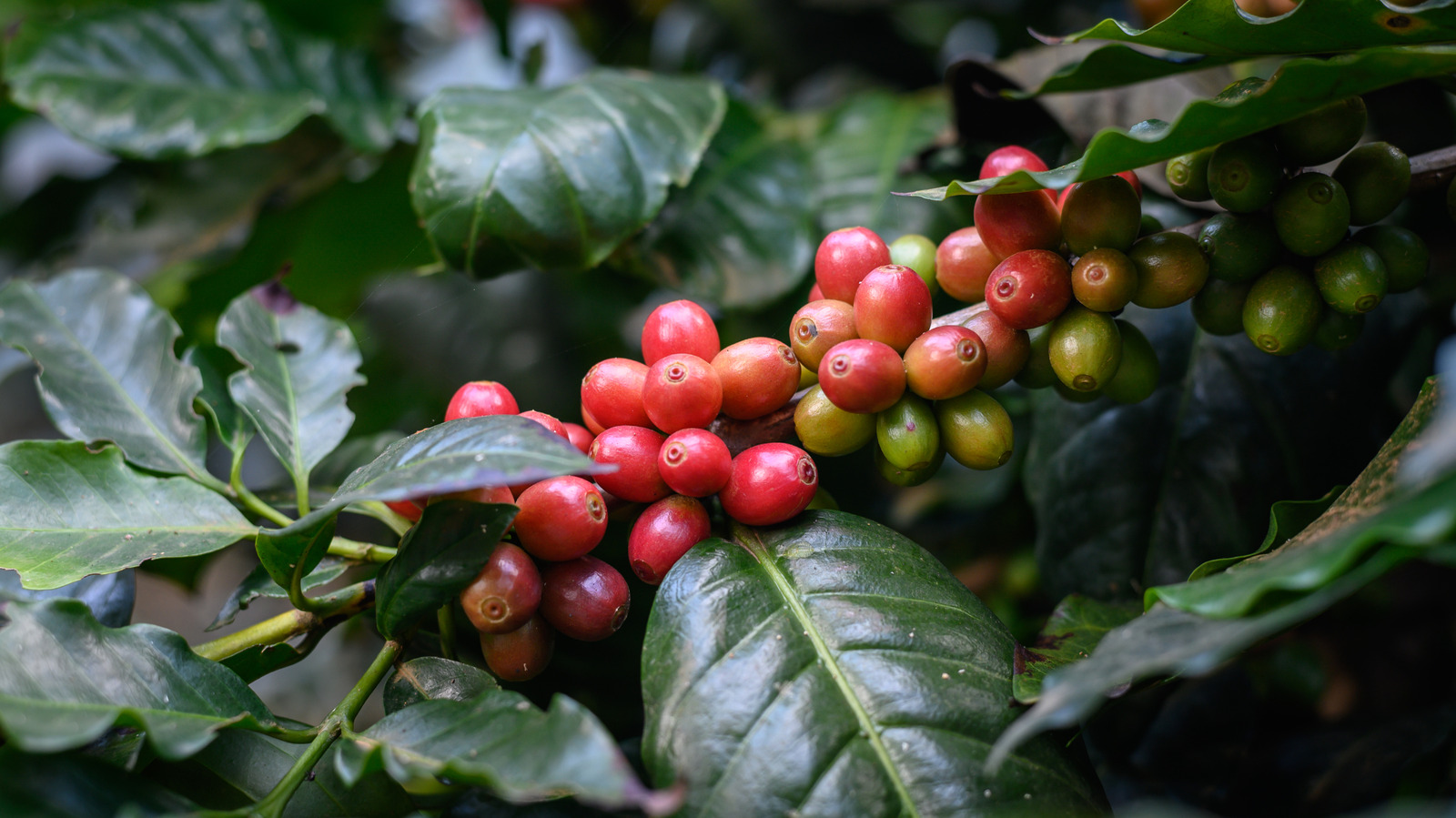Papayas are filled with seeds. Do those seeds count as fruit? Of course not. There is a similar relationship when it comes to coffee plants and coffee beans.
Coffee beans grow on tropical evergreen plants that belong to the genius Coffea. The plants can reach over 30 feet tall and bear red, oblong fruits called cherries. Tucked inside the cherry are green coffee beans. To extract the beans within, that red fruity flesh must be peeled away. (Considering there are typically only two beans per cherry, a lot of work goes into filling a whole bag of coffee beans!) So, while the cherry is a fruit, the coffee “beans” inside are technically seeds.
As with other fruits, the cherry serves as a protective outer layer keeping those raw coffee beans safe. You can technically eat it but most folks probably wouldn’t feel the desire to try. Despite the fruit’s mango- or watermelon-like taste, the sliminess of the interior mesocarp is off-putting. Some folks steep the hull (called the cascara) into herbal tea. Even though it isn’t much for eating, that helpful little cherry turns bright red to let harvesters know when the fruit is ripe and the coffee bean inside is ready to be picked. Once harvested, those seeds are dried, roasted to a nutty brown hue, and ground to make coffee.
Coffee beans are technically seeds inside of a fruit
In addition to the red cherries, coffee plants grow small pink or white flowers. These ornaments provide a striking aesthetic against the plant’s leaves. The latter can be dark green, purple, or yellow and reach 1 to 16 inches long. Baby coffee plants begin producing cherries after two or three years of maturation. Older plants (7-20 years) produce more cherries, but 10 pounds of cherries (two pounds of raw coffee beans) is average per plant per year.
Coffee plants are cultivated all around the world in more than 40 different countries. There are 25-100 different species of coffea plants, according to the National Coffee Association, but just four main types of coffee beans, each with a unique caffeine content and flavor profile. The two most popular types are arabica and robusta. Arabica beans (which account for well over half of global coffee production) grow in the “Bean Belt,” a stretch between the Tropics of Cancer and Capricorn. This is also where much of the world’s cacao beans for chocolate are grown, which is why coffee and chocolate pair together so well.
Robusta beans (which account for more than a third of global production) thrive in the lower altitudes of Brazil, Indonesia, and parts of Africa. Liberica beans are grown in Central and Western Africa, Malaysia, and the Philippines, and Excelsa beans hail from Southeast Asia. Regardless of where they come from, all of those seed-beans around the world have the cherry fruit to thank for their safe delivery into mugs worldwide.





